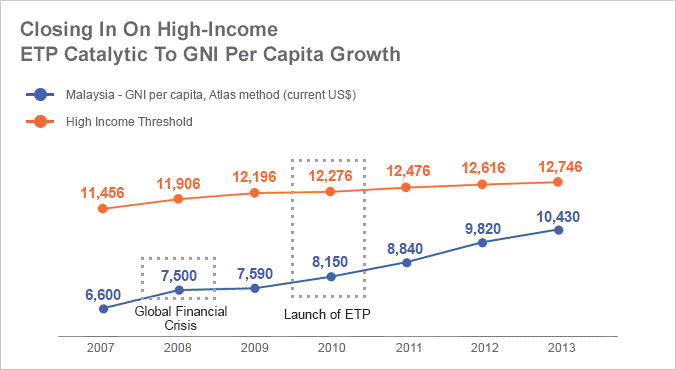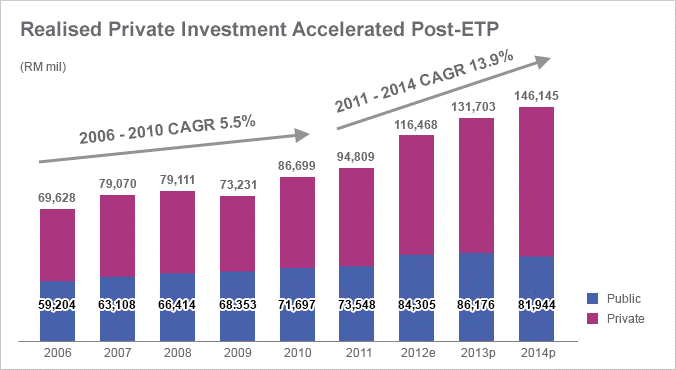How and why Malaysia got affected by the Asian crisis?
The year 1997 witnessed the largest Asian crisis affecting the economy and development of the Middle East Asia countries. Before 1997 the middle east Asian countries such as Thailand, Malaysia, Singapore, Indonesia, Hong Kong, and South Korea has set the finest example of economic growth rate which increased from 6% to 9% per annum as estimated by the GDP. However, the economy of these countries faced a huge breakdown which started from July 1997 and keep on going till January 1998. These countries had lost 70% of their stock market value till the end of the economic collapse as well their currency had decreased in value in comparison to the US dollar. The investors trembled to invest money in these states as the disaster was visible to the domestic and foreign organizations. This led the ever-proud and capable ministers of these countries to beg for massive financial aid from the international monetary fund (IMF).
Background:
The base for the crisis was laid before the 1990’s when the export rate increased rapidly in Middle East Asia countries especially Thailand and Malaysia due to the export trade progress in these states. The foreign markets started investing in these countries which not only enabled them to export simple material like textile, cotton to complex products such as automobiles, electronics, and semiconductors. (W.L.Hill, 2015)
The year 1996 saw the highest export rate in the history of the Malaysian economy where the export had grown to 18% per year whereas Thai exports had grown to 16% per year, Singapore’s by 15% per year, Hong Kong’s by 14% per year and South Korea by 12% per year. They emerged as an Asian export powerhouse by the end of 1996. The export profit helped in the development of infrastructure leading to commercialization and increased rate of a residential area. The value of the residential property increased in countries like Bangkok, Malaysia, and Hong Kong which led to heavy investments for constructing buildings, offices and buying industrial assets, etc. the banks were also happy to lend heavy loans knowing that the rate of the property is increasing and the borrowed money would be returned easily by the investors until the 1997 crisis. Giant industrial projects started to gear up from the wealth generated by the export trade which encouraged the Asian countries to make even more bold investments in industrial capacity by acquiring industrial assets. (Carson & Clark, 2013)
Moreover, the government-supported and launched new projects which could be justified from the example of South Korea in opening itself as the largest automobile and electronic market worldwide. The second big step was taken by the government of Malaysia by investing M$20 billion in the construction of the government administrating center in Putrajaya. The government was funding the largest technology communication plant and apart from that a huge Bakun dam was to be constructed at M$13.6 million which was said to be the major power generation scheme in the country.
The Middle East Asian countries were setting up the example of top impressive economies in the world which collapsed with the devaluation of Thai currency. The Thai baht went a great flow down from July 2nd yet the government promised to maintain its currency value by giving $28 billion to the export exchange but the external debts took the Thai firms by a storm which led to intense downward pressure to the country’s currency. This was a call of danger for other countries and subsequently, after the Thai devaluation, the other region’s currencies tumbled forcefully as they ran out of capital. The first degradation was followed by the Philippines due to which they reduced their peg.
However, Malaysia and Indonesia tried their best to defend their currency but they had to be a part of the Asian crisis, unfortunately and had to adopt the following floating regime. By November 1997, the Middle East Asian countries realized that this is a long financial meltdown and the miracle of being the powerful emerging economies had vanished.
Helplessly, the countries had to take funds from the International Monetary Funds (IMF) because the government was forced to regain its stock market value but they failed to overcome their economic downfall. However, after the devaluation of the Thai currency the foreign investors started withdrawing their money because of the crisis in Japan along with the Asian financial meltdown affecting the economies of middle and south East Asian countries.
Bank Negara Malaysia (BNM) stopped defending their currency by July 14, 1997 and watched silently as the value of the currency decreased from RM 2.5 to RM 4.84 against the US dollar. The economy reduced to 5% by mid-1998. Though the regression and downfall pressure continued Malaysia didn’t turn to IMF for help. The central bank and government side by side tried to regain their stock value but despite their effort, the financial sector exploded. This also led to a political crisis in the country where Prime Minister Mahathir had clashed with the policies introduced by the deputy prime minister Anwar Ibrahim. At the beginning of September 1998, Mahathir declared the policies of Anwar irrelevant and fired him for deforming the remains of the financial sector. Nevertheless, the bank tried to implement strategies to regain the banking area and to boost the capital flow at the end of 1998.
-
After 2000 the economy grew much more slowly than before the Asian crisis and investment declined. Why do you think this happened?
After the 1990-1997 crises, Malaysia tried to outcome its downfall by changing its strategies. The GDP growth started to rise from 6% in1999 to 8.9% in the year 2000. The productivity rate was negative in 1998 i.e. -9% to 3.9% in 2000. The CPI growth also began to increase again from 5.2% in 1998 to 1.5% in 2000. However, the rate of unemployment remains constant during these years. The Asian crisis was a warning alarm for the developing countries as it made them realize that it is difficult to defend their economy against the international capital flow. This was an everlasting experience for the developing countries that were entering the global market. However, Malaysia learned lessons from this crisis, and a new framework of the financial reforms was formulated to eliminate risk and vulnerability in the future. (Lim & Goh, 2011)
The crisis collapsed the five-year economy program of the country along with the 2020 target plan to achieve its distribution goal and the world’s economy. In July 1999, BNM launched its program of developing another efficient bank sector that would help to defend the country’s currency and capital in case of future financial contagion. In May 2000, Dr. Zeti was appointed as the seventh governor of BNM and she becomes the first female banker to lead the central bank of a country. She along with other officials put a great emphasis on the financial reforms by reserving and accumulating the Malaysian sources. The BNM managed to reserve $120 billion till the year 2006 from $10.2 which was reserved in January 1999. This reserve was compatible with giving 71 times the short spam debts and finance the imported for 9.5 months. For proper management and regulation and to improve the country’s international competitiveness a financial sector Master Plan (FSMP) was formulated in 2001-2010 which was quite successful in improving economy and productivity growth by 5.8% per year from 1993-2004. The number of financial organizations was also contracted from 58 to 20 by 2005.
Strong measures were taken by the Malaysian government to strengthen the economy still the growth speed could not match the rate of productivity before the 1997 crisis. A review of every bank was carried out every six months and every innovation or plan was tested before its implementation. Many programs were launched that ensured the efficiency of banks to meet international Accounting Standards.
The Credit Counseling and Debt Management (CCDM) was established as a monitoring agency to keep a check on the financial progress of the consumer by guiding them to save and invest money in the right sectors. Moreover, an educational program by the name of Banking Info was started in 2003 which aimed to liberate people about financial strategies and terms. Dr.Zeti emphasized investment in the domestic sector that would lead towards an innovative and productive economy. However, the quantity of skilled labor was limited in the country which so no entrepreneur ideas were available after which it was decided that a course teaching entrepreneurship would be introduced in the educational institutes for boosting up the entrepreneurship sector.
Despite these efforts, the Malaysian economy could not manage to reach its precious achieved target of production growth in 1997. The GDP between the years 2001-2008 was recorded to be a constant increase of 3.7% which was 2.6% less than generated in the year 1997. However, the productivity growth remains constant from 39% GDP to 43%, and the stock exchange was also boosted to 15.8% in 2007 from 11.7% in 1997. Though even after such improvement the domestic investment depreciated from 6.5% in 1990-1997 to 3% in 2001-2008.
The reason proposed by some enterprises was a lack of management in the country. The country couldn’t manage the heavy investments and projects efficiently which resulted in the downfall of the economy. Moreover, the unskilled labor could not put fruitful results and Malaysia needs skilled labor to improve its economy. Education was a necessary part of the production and development of the country. Apart from this, the government strategies differ from the private sector which has created chaos among people to manage the procedure of work.
One of the major reasons identified was the decreased value of the Malaysian currency that lost its value to up to 50% because of the crisis along with the stock market that experienced a decline to even 60%. (Arif, 1999)
The composite index (CI) of the Kuala Lumpur Stock Exchange that was ranked as the third-largest stock exchange market in the region fell extensively from 1077.3 to 262.7 points within the time span of six months. Besides, the financial crisis was also experienced by the real estate segment of the market which resulted in the closure of many businesses along with cutting back leading to increased unemployment and consequently resulting in a high inflation rate. Because of the declining real estate market, the domestic demand decreases that resulted in hitting negatively the domestic-oriented industries of the country including services and construction segments. (Uddin & Ahsan, 2014)
Malaysian private investment contracted because of the uncertainties occurring in the unstable exchange rates, the rigid liquidity position of the economy, and declining local and external demand. Because of this Foreign Direct Investment (FDI) also decreased specifically in manufacturing, tourism, hotel, and agriculture segments.
All these factors contributed to decreased employment and increased inflation that adversely affects the household incomes of the Malaysian community. Besides, several migrant workers also face homeless positions and return to their homelands because of no social safety and employment. Moreover, the financial crisis also hit the luxury goods segment of the industry that includes both the import and domestic market that consequently resulted in discouragement for foreign luxury brands to invest in the country.
Another factor that has slowed the economic growth of Malaysia is the emergence of China and India as strong competitors in a foreign market that are offering lower wages workers, low investment costs, and enough authority to the businesses who are investing in these countries. Because of this, the export trade of both the countries had left Malaysia behind which has become the reason for Malaysia to not come back as a strong developed country.
All these factors contribute to not letting the economic growth of the region rise at an escalating rate as it was before the financial crisis.
-
Is the NEM good for Malaysia? Would you invest in the country? Where and why?
Is the NEM good for Malaysia `
Prime Minister Najib has proposed the outline of the New Economic Model at the invest Malaysia conference. The main aim of the NEM is to join the highest rank economies of the world without compromising on quality and sustainability by 2020. The growth of the inclusive sector is also necessary and sustainable development should take place reserving the wealth for future generations as well. The NEM model proposed several strategies and plans that would help in the productivity growth and economic development of the country. It included financial management, the education of unskilled staff and labor, better performance and competition, more investment in the private sector and infrastructure along sustainable environmental measures for a healthy region. (SCHELLEKENS, 2010)
For making sure that the outline proposed is of good to the country a public consultation was done after which the improvements and alteration would be made to the model before bringing it into action.
NEM took its initiative by shifting dimensions for economic growth, for example, Malaysia shifted from quantity growth to quality growth. Heavy labor and investment could not bring a long-term accumulation of growth therefore it is necessary to focus and invest on physical and human capital. The NEM model proposed that more focus would be laid on the private sector which would help in eliminating government interference leading to more competition and visibility of commercial activities. Due to the geographical structure of Malaysia, it is suggested that it work in clusters form in the region where people live. Many new strategies have been proposed that ensure foreign talent in the country. Moreover, Malaysia needs to make smart decisions for changing technological change into innovation transformation that would help in the public sector growth of the country.
Firstly Najib decided to focus on the poor people of the country as they were the labor that would work the production of the country. The labor force increased from 9.2 million to 11.2 million which included foreign labor as well that has fled illegally to Malaysia. However soon the prime minister realized that the world is moving with speed and technology due to which he would need skilled labor for the growth of the country. Since the country could not rely on the wages of the foreign labor and the prime minister deliver the message to the firms and institutes to look for quality and skilled labor without them it would be difficult to compete in the global market. For the sake of skilled labor, the education system was made strong for which the government was spending 23% of its operating expenditure and 18% of its development expenditure. Most of it was given for the construction of universities which required knowledge and innovation as well. The Malaysian government wanted entrepreneurs to improve the country’s economic situation for this purpose the education deputy minister suggested launching a subject of entrepreneurship for the students that would help them to come up with entrepreneur business. For this purpose jobs were also introduced in the bank sector. Foreign multinationals companies could also play a vital role in boosting the economic development of the country as they were allowed to hold major stacks of the share in establishing a company merely on a private basis that would not include electricity, telecommunication, and energy storage firms. Since the 2008 crisis the country faced financial and political instability and the only good thing at that time was NEM.
Would you invest in the country?
Yes! I would definitely invest in Malaysia because of many reasons that include:
- As NEM was formed to transform Malaysia into a high-income nation by 2020, the government shows its commitment to its model by returning the private sector to its lawful position as the foremost driver of the country’s economic growth. Many of these transformations could be seen through the existing rapid results of the country that has eventually improved the lives of Malaysians and set up significant development which benefits businesses as well as the investment community. (AREND, 2010)
- From 2010-2012, Malaysia experiences steady GDP growth upwards of 5% despite continuous sluggishness in the global economy. In 2013, Malaysia’s economy witness GDP growth of 4.7%. The NEM’s focus on the growth of a private sector has eventually stimulated private investment in the country. BY 2013, this foreign private investment was more than tripled since the beginning of the program. This growth route has positioned Malaysia determinedly on the roadway to attain its GNI target for 2020. This could be witnessed by Malaysia’s GNI that has already increased by 42.5% to US$10,060 in 2013 from US$7,059 in 2009. On this basis, Projections indicate that Malaysia could achieve its high-income target of US$15,000 in GNI per capita before 2020. (Adis, 2016)

Source: World Bank Atlas Method

Source: Department of Statistics, Private Investment in Constant 2005 Prices in RM
- Besides, according to the IMD Competitiveness Index, the Malaysian economy was the 14th most competitive market in the world and fifth among countries with a population of over 20 million, which placed it above places like Japan, Australia, and the United Kingdom. The World Bank also listed it as the sixth easiest country in the world to do business and the sixth most active country for foreign investment by FPM.
Hence, the results could be seen that the NEM has proved to be successful in maintaining the growth of Malaysia. Besides, Malaysia has other key advantages as well that attract investors to invest in the country. These include a world-class infrastructure that facilitates electronics manufacturing and exports and sets the stage for a growing logistics cluster, a location conducive to regional logistics hubs, a mature manufacturing base, and cultural, ethnic, and biological diversity.
Bibliography
Adis, K. (2016, August 10). 10 reasons why you should invest in Iskandar Malaysia. Property Report.
AREND, M. (2010, September 12). Radical Change’ Marks National Growth Plan. Site Selection magazine.
Arif, M. (1999). The Malaysian Financial Crisis: Economic Impact and Recovery Prospects. The developing Economies, 417-38.
Carson, M., & Clark, J. (2013). Asian Financial Crisis. New York: Federal Reserve Bank.
Lim, M.-H., & Goh, S.-K. (2011). How Malaysia. Weathered the. Financial Crisis. Policies and. Possible Lessons. THE NORTH-SOUTH INSTITUTE.
SCHELLEKENS, P. (2010, March 30). What is new in Malaysia’s New Economic Model? The World Bank. Retrieved from https://blogs.worldbank.org/eastasiapacific/what-is-new-in-malaysia-s-new-economic-model
Uddin, S. S., & Ahsan, L. (2014). Impact of Asian Financial Crisis in Malaysian Economy with special reference to Multinational Companies. Research Journal of Management Sciences, 7-12.
W.L.Hill, C. (2015). The Asian Financial Crisis. Washington: University of Washington.




